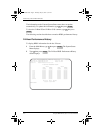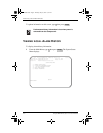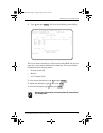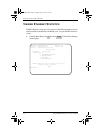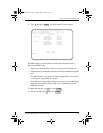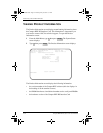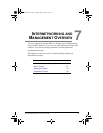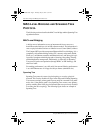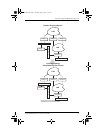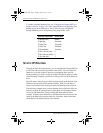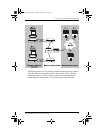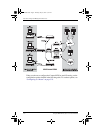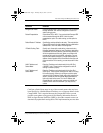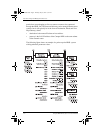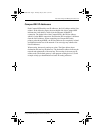
Internetworking and Management Overview
7-2 Campus-REX RS Interface Card User Manual
MAC-LEVEL BRIDGING AND SPANNING TREE
P
ROTOCOL
The following sections describe the MAC-level bridge and the Spanning Tree
algorithm function.
MAC-Level Bridging
A bridge moves information across an internetwork from a source to a
destination at the link layer (of an OSI reference model). The information is
sent to a physical address known as a Media Access Control (MAC) address.
The Campus-REX provides transparent Ethernet MAC-level bridging. It is a
completely self-contained bridge with a CPU, memory subsystems (RAM,
Flash, etc.), an Ethernet controller and Ethernet drivers, and other glue logic.
It provides complete main bridging tasks of learning, forwarding, filtering,
and hashing/buffer management. Additionally, it offers 802.1d Spanning
Tree protocol, packet encapsulation (through HDLC or PPP framing), and
other local tasks.
Forwarding performance is at a full serial line rate and filtering performance
is at a full Ethernet rate of 14 kpps for 64-byte frames (minimum size).
Spanning Tree
Spanning Tree protocol creates a logical topology to overlay a physical
network. This overlay disables all loops in the data path. Enabling Spanning
Tree ensures a unique, primary path from any node on a network to any other
node. Also, if the primary path is lost, Spanning Tree creates a new primary
path by enabling links in the physical network that were previously disabled
in creating the active topology. The following figure shows an example of
Spanning Tree.
CAD1069i5.book Page 2 Thursday, May 30, 2002 7:32 AM



